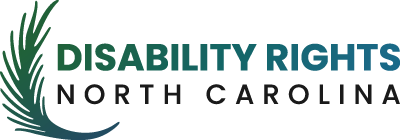TBI Program, Study, or Pilot
Type: Study 2
Agency Providing the Funding: Information Unavailable
Year Provided/Duration: Information Unavailable
Funding Given To: Information Unavailable
Population (Juvenile Justice, Criminal Justice, Parole, Probation, Jail, Prison, etc.,)
System Group
Law Enforcement
Location
Various Agencies in Kentucky
Purpose/Goal
This pretest/posttest study examined the effectiveness of an online training module that was designed to assist law enforcement officers in differentiating traumatic brain injury (TBI) from alcohol intoxication (AI). Officers must differentiate TBI signs from AI signs during encounters with individuals with TBI in order to respond appropriately, yet they receive little training in TBI. This skill is important because many signs of TBI and AI mimic one another and distinguishing them under stressful conditions can be problematic. The increased number of veterans who have returned from Iraq and Afghanistan with TBI increases the likelihood of unnecessary and unfortunate confrontations between individuals with TBI and law enforcement officers. (Nale & Shackelford, 2016)
Screening Tool Used
What tool was used?
The first section presented are encounter scenario between a law enforcement officer and a suspicious person in which numerous signs of possible TBI were described. Participants were then asked to indicate how many signs of TBI were present (one to two signs, three to five signs, six or more signs, or not sure). The second section consisted of a grid listing 19 signs of TBI and/or AI. For each sign, the participants were required to indicate if the sign showed AI, TBI, or both AI and TBI. (Nale & Shackelford, 2016)
When is screening done?
N/A
What happens after screening?
N/A
Who Conducted Screening?
N/A
Data Collection
Tracking
Data was collected through Qualtrics, an online matrix service. In order to maintain participant anonymity, survey responses were automatically entered into a database with a computer-generated PIN number.
Analysis was completed using SPSS 21. Data were recorded so that higher numbers reflected higher levels of variables (such as experience and training frequency), with unsure or incorrect responses coded as 0. (Nale & Shackelford, 2016)
Findings.
Results showed a statistically significant increase in total posttest scores, suggesting that the training was effective. Officers reported little TBI training, and career experience was not associated with higher pretest scores. (Nale & Shackelford, 2016)
Report findings were extensive and cannot be added as PDF’s to our site. Please submit a request at the link above and we will send the report(s) via email within 24-48 business hours.
Community Resources
Information and Referrals
N/A
Trainings
Participants were typically able to complete the tests and training module within a 30-min time period. Due to law enforcement agency administrator
concerns regarding officer availability and time required to complete the training module, an effort was made to limit the length and complexity of the tests and the training content.
The online training module was effective in facilitating officer differentiation of AI and TBI signs. The training assessed in this study was a 30- min online module, which was highly accessible and convenient for officers but was very brief. An expanded training exercise would allow for additional content that would be more comprehensive, relevant, and beneficial. (Nale & Shackelford, 2016)
Agency Contact Information
Name
Brain Injury Alliance of Kentucky
Website
Phone Number
Sustainability
N/A
Advisory Board
N/A
How was this information acquired?
Information was acquired through online published report.
References: For more information on this states work, please see references
Nale, S., & Shackelford, J. (2016). Training law enforcement officers to differentiate traumatic brain injury from alcohol intoxication. Contemporary Issues in Communication Science and Disorders, 43, 154-163. doi:1092-5171/16/4301-0154
